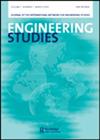Beyond Efficiency: Engineering for Sustainability Requires Solving for Pattern
IF 1.3
3区 工程技术
Q2 EDUCATION, SCIENTIFIC DISCIPLINES
引用次数: 16
Abstract
ABSTRACT There is a consensus that engineering design practice and education needs to change, to address the sustainability challenges facing the planet. This shift towards sustainability engineering requires illustrating successful design practices that embed sustainability values, particularly designs that move away from the current focus on input–output efficiency, towards eco-social and socio-technical approaches to design. We present three cases where the designs illustrate such a widening of the design space, to include parameters beyond input–output efficiency and optimization for profit, and leading to innovative socio-technical solutions. These cases suggest that the socio-technical connection is highly plastic, allowing for a range of ways in which the ecological, social, and technical could come together to form innovative and sustainable solutions. They illustrate a novel design principle – ‘Solving for Pattern’ – where the designs seek to address many problems simultaneously in an interconnected way. These cases indicate that designing for sustainability requires a broadening of the roles and identities of engineering designers, to include themes wider than engineering sciences and mathematics. Including these and similar case studies in engineering curricula could support the shift towards such a broader engineering design identity, where sustainability is a key component of design practice.超越效率:可持续性工程需要解决模式
摘要人们一致认为,工程设计实践和教育需要改变,以应对地球面临的可持续性挑战。这种向可持续性工程的转变需要说明嵌入可持续性价值观的成功设计实践,特别是从目前对投入产出效率的关注转向生态社会和社会技术设计方法的设计。我们提出了三个案例,其中的设计说明了设计空间的拓宽,包括投入产出效率和利润优化之外的参数,并导致创新的社会技术解决方案。这些案例表明,社会技术联系具有高度可塑性,可以通过一系列方式将生态、社会和技术结合起来,形成创新和可持续的解决方案。它们展示了一种新颖的设计原则——“解决模式”——设计寻求以相互关联的方式同时解决许多问题。这些案例表明,可持续性设计需要拓宽工程设计师的角色和身份,包括比工程科学和数学更广泛的主题。将这些和类似的案例研究纳入工程课程可以支持向更广泛的工程设计身份转变,在这种身份中,可持续性是设计实践的关键组成部分。
本文章由计算机程序翻译,如有差异,请以英文原文为准。
求助全文
约1分钟内获得全文
求助全文
来源期刊

Engineering Studies
ENGINEERING, MULTIDISCIPLINARY-HISTORY & PHILOSOPHY OF SCIENCE
CiteScore
3.60
自引率
17.60%
发文量
12
审稿时长
>12 weeks
期刊介绍:
Engineering Studies is an interdisciplinary, international journal devoted to the scholarly study of engineers and engineering. Its mission is threefold:
1. to advance critical analysis in historical, social, cultural, political, philosophical, rhetorical, and organizational studies of engineers and engineering;
2. to help build and serve diverse communities of researchers interested in engineering studies;
3. to link scholarly work in engineering studies with broader discussions and debates about engineering education, research, practice, policy, and representation.
The editors of Engineering Studies are interested in papers that consider the following questions:
• How does this paper enhance critical understanding of engineers or engineering?
• What are the relationships among the technical and nontechnical dimensions of engineering practices, and how do these relationships change over time and from place to place?
 求助内容:
求助内容: 应助结果提醒方式:
应助结果提醒方式:


